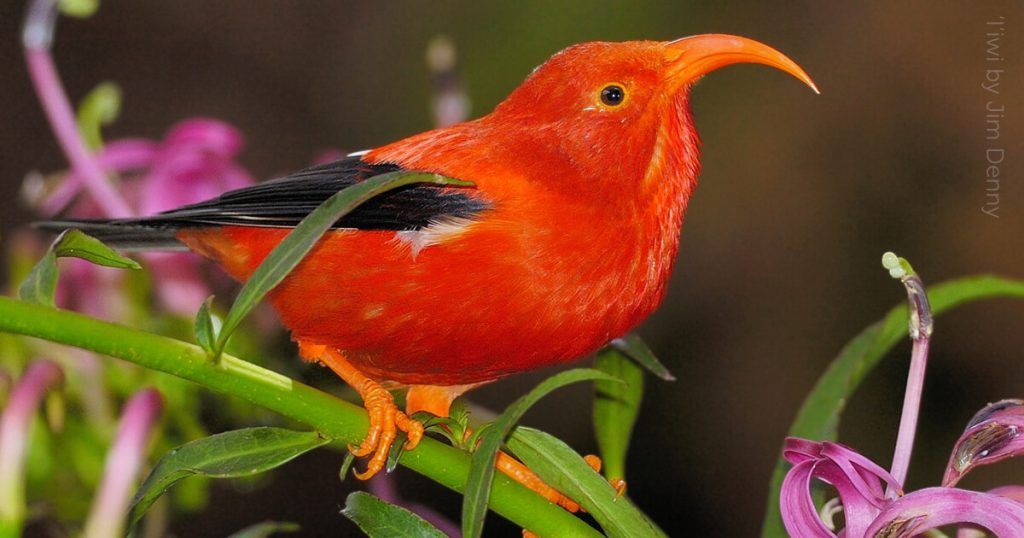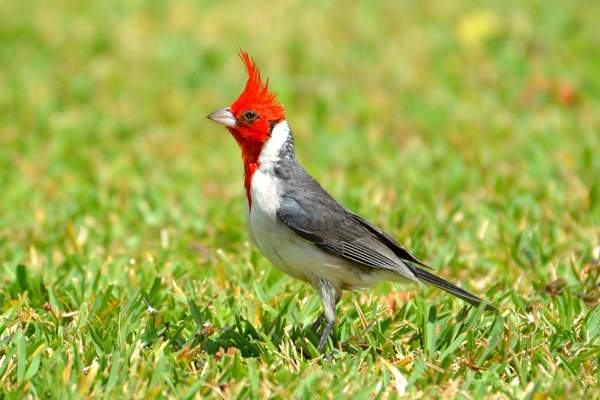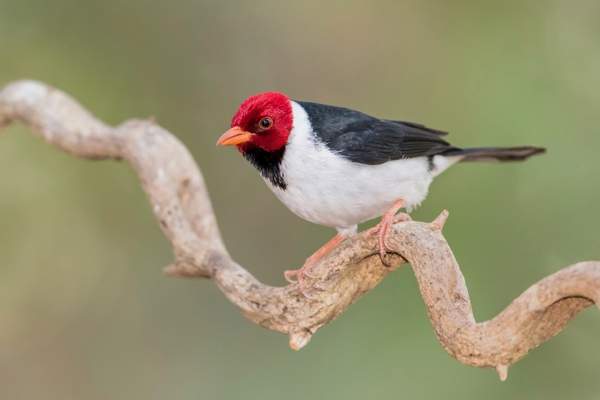Discovering the Island’s Avian Beauty
Are you a bird lover? If so, Hawaii will fascinate you with its colorful array of feathered friends, especially the distinctive red headed bird in Hawaii. Known for their radiant plumage and melodious songs, these birds embody the vibrancy of Hawaii’s rich ecosystem. So, who are these red-headed avian wonders? Let’s explore.
The Natural History of Hawaiian Birds
The Evolutionary Journey
Ever wondered how these remarkable creatures came to be? Like the islands themselves, the birds of Hawaii are born out of isolation. Located in the midst of the Pacific Ocean, Hawaii is over 2000 miles away from California and more than 3000 miles from Japan. Over millions of years, they’ve evolved into unique species that are found nowhere else on Earth. It’s a case of nature’s laboratory at work, creating beauty and diversity in equal measure.
The Unique Environmental Adaptations
The red-headed birds in Hawaii have adapted splendidly to their environment. Their brightly colored plumage, specialized beaks, and distinctive calls are perfect for the islands’ unique ecosystems.
A Closer Look at the Red Headed Birds in Hawaii
The ‘I’iwi (Drepanis coccinea)
THE PHYSICAL CHARACTERISTICS OF THE ‘I’IWI

Among Hawaii’s red-headed birds, the ‘I’iwi stands out with its fiery red feathers and sickle-shaped bill. This nectar-feeding bird is a feast for the eyes, with its contrasting black wings and tail, adding to the drama of its appearance.
The ‘I’iwi’s Habitats and Behaviour
‘I’iwi are usually found at higher elevations, fluttering around native forests. They’re known for their nomadic behavior, traveling far in search of nectar from the blossoming flowers of native plants like the ‘ōhi’a lehua.
The Apapane (Himatione sanguinea)
THE PHYSICAL ATTRIBUTES OF THE APAPANE

ANOTHER SPECTACLE OF THE HAWAIIAN AVIAN WORLD IS THE APAPANE. THIS BIRD FLAUNTS A PRIMARILY RED BODY, WITH BLACK WINGS AND TAIL, AND A WHITE VENT. THE APAPANE’S DISTINCTIVE HIGH-PITCHED CALL IS A CHARACTERISTIC SOUND IN THE HAWAIIAN FORESTS.
advertisement

THE APAPANE’S HABITATS AND BEHAVIOUR
Apapanes are primarily found in the ‘ōhi’a lehua forests. They are agile and acrobatic, effortlessly moving through the canopy in search of nectar.
The Role of Red Headed Birds in Hawaiian Culture
Birds in Native Hawaiian Legends and Traditions
Birds play a central role in Hawaiian culture, acting as spiritual guides and symbols of power. The ‘I’iwi and Apapane, for instance, feature in traditional stories, chants, and hula. Their feathers were also used in creating beautiful and significant Hawaiian featherwork.
The Current Status and Conservation Efforts
Threats to the Red Headed Birds in Hawaii
Despite their uniqueness, Hawaiian red-headed birds face several threats, including habitat loss, invasive species, and diseases like avian malaria.
Conservation Efforts in Hawaii
Thankfully, efforts are being made to protect and conserve these magnificent creatures. Native forest restoration, control of invasive species, and captive breeding programs are some initiatives in place to safeguard these avian treasures.
Cardinals – The more commonly seen non-native birds
Red crested cardinal
The red crested cardinal and the yellow-billed cardinal are two captivating avian species that have become synonymous with the beautiful islands of Hawaii. These birds, with their vibrant colors and melodious songs, have enchanted both locals and visitors alike, creating a rich tapestry of natural beauty across the archipelago. They are the two most commonly seen red headed birds in Hawaii.

The red crested cardinal (Paroaria coronata) is a small passerine bird that is easily recognized by its striking appearance. Its plumage is a combination of vibrant red, black, and white, making it a truly eye-catching sight against the lush greenery of Hawaii’s landscapes. The red crested cardinal is known for its distinctive crested head, which adds an extra touch of elegance to its overall appearance. Males and females share similar coloration, but the male possesses a slightly larger crest.
These cardinals are not native to Hawaii but were introduced to the islands in the mid-20th century. Since then, they have thrived in their new habitat, adapting to the local conditions and establishing themselves as a resident bird species. Their adaptability and resilience have made them successful colonizers across the Hawaiian islands, where they can be found in a variety of habitats, including gardens, parks, and forest edges.
The red crested cardinal’s diet primarily consists of seeds, fruits, and insects. With their strong beaks, they skillfully crack open seeds, while their nimble movements enable them to catch small insects in flight. Their melodious calls resonate through the air, adding a delightful soundtrack to Hawaii’s natural symphony. These vocalizations are often used for territorial defense or courtship, as these birds are known to form monogamous pairs during the breeding season.
Yellow-billed cardinal
In contrast, the yellow-billed cardinal (Paroaria capitata) displays a different set of characteristics that make it equally captivating. With its golden plumage and striking black mask across its eyes, the yellow-billed cardinal is a true testament to the beauty found in Hawaii’s avian world. Its name is derived from its distinctive yellow bill, which sets it apart from its red-crested counterpart.

AN INTRODUCED RED HEADED BIRD IN HAWAII
Similar to the red crested cardinal, the yellow-billed cardinal was introduced to Hawaii and has successfully established itself in various parts of the islands. It shares similar habitats with its red-crested relative and is often found in the same areas, such as gardens, parks, and open woodlands. The yellow-billed cardinal’s diet also consists of seeds, fruits, and insects, showcasing its adaptability to the local environment.
Both of these cardinals contribute to the ecological balance in Hawaii. By consuming seeds and insects, they play a role in seed dispersal and pest control, benefiting the native flora and fauna. Furthermore, their striking appearances make them popular among birdwatchers and photographers, attracting attention and fostering a deeper appreciation for Hawaii’s natural heritage.
Red headed birds in Hawaii
| Bird Species | Scientific Name | Appearance | Habitat |
|---|---|---|---|
| I’iwi | Drepanis coccinea | Bright red plumage with black wings and tail | Montane and subalpine forests |
| Apapane | Himatione sanguinea | Brilliant red feathers | Native forests, including rainforests |
| Red Crested Cardinal | Paroaria coronata | Red plumage with a black mask and crest | Gardens, parks, forest edges |
| Yellow-billed Cardinal | Paroaria capitata | Golden plumage with a black mask and yellow bill | Gardens, parks, open woodlands |
The I’iwi (Drepanis coccinea) is known for its vibrant red plumage, black wings, and tail. It is primarily found in montane and subalpine forests in Hawaii.
The Apapane (Himatione sanguinea) displays brilliant red feathers. It is typically found in native forests, including rainforests, across the Hawaiian islands.
The Red Crested Cardinal (Paroaria coronata) exhibits red plumage with a black mask and crest. It is commonly seen in gardens, parks, and forest edges throughout Hawaii.
The Yellow-billed Cardinal (Paroaria capitata) possesses golden plumage with a black mask and a distinctive yellow bill. It can be observed in gardens, parks, and open woodlands across the Hawaiian islands.
These red-headed bird species contribute to the rich biodiversity of Hawaii, each with its unique characteristics and habitat preferences.
From the striking ‘I’iwi to the melodious Apapane, Hawaii’s red-headed birds are truly a marvel of nature. They not only enhance the beauty of the islands but also play a crucial role in the ecosystem and cultural identity of Hawaii. Let’s hope that conservation efforts will ensure their songs continue to echo in the Hawaiian forests for generations to come.
Frequently Asked Questions
- What do ‘I’iwi and Apapane eat?
They primarily feed on the nectar of native Hawaiian plants, especially the ‘ōhi’a lehua. - Why are the ‘I’iwi and Apapane red?
The red color is a result of their evolutionary journey, likely linked to their specific dietary habits or mating behaviors. - Are these red headed birds endangered?
‘I’iwi is listed as vulnerable due to habitat loss and disease. The Apapane, while not currently endangered, faces similar threats. - What efforts are being made to conserve these birds?
Initiatives include habitat restoration, control of invasive species, and captive breeding programs. - Can these birds be found anywhere else besides Hawaii?
These species are endemic to Hawaii, meaning they are native and restricted to this particular region.

